Supermicro M11SDV-4CT-LN4F AMD EPYC 3101 Benchmarks
For this exercise, we are using our legacy Linux-Bench scripts which help us see cross-platform “least common denominator” results we have been using for years as well as several results from our updated Linux-Bench2 scripts. At this point, our benchmarking sessions take days to run and we are generating well over a thousand data points. We are also running workloads for software companies that want to see how their software works on the latest hardware. As a result, this is a small sample of the data we are collecting and can share publicly. Our position is always that we are happy to provide some free data but we also have services to let companies run their own workloads in our lab, such as with our DemoEval service. What we do provide is an extremely controlled environment where we know every step is exactly the same and each run is done in a real-world data center, not a test bench.
We are going to show off a few results, and highlight a number of interesting data points in this article.
Python Linux 4.4.2 Kernel Compile Benchmark
This is one of the most requested benchmarks for STH over the past few years. The task was simple, we have a standard configuration file, the Linux 4.4.2 kernel from kernel.org, and make the standard auto-generated configuration utilizing every thread in the system. We are expressing results in terms of compiles per hour to make the results easier to read:
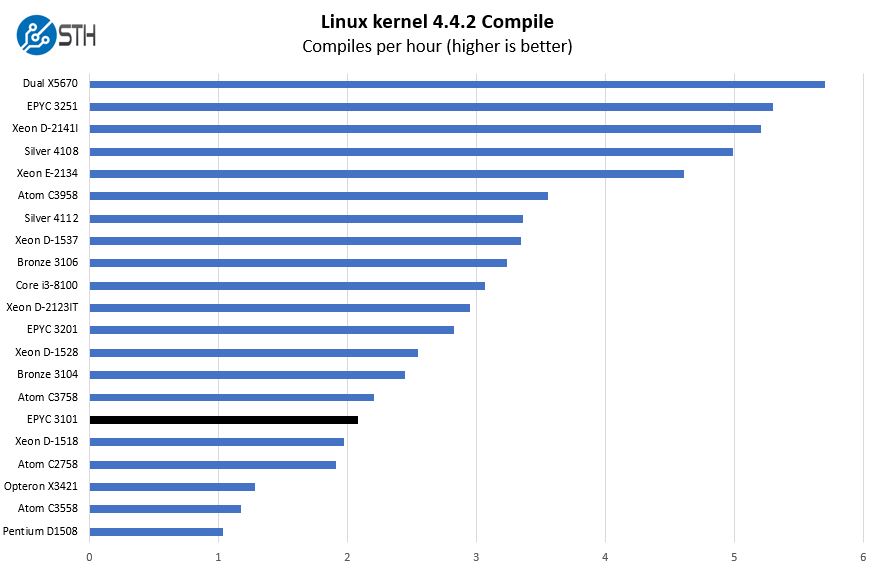
Here we wanted to shows the range that the AMD EPYC 3000 single die SKU stack offers. On the Supermicro M11SDV-4CT-LN4F, the range of the low-end AMD EPYC 3101 to the higher-end AMD EPYC 3251 is about 2.5x and there are only four SKUs (three shown.) In comparison, Intel has many current SKUs between these points and most use more power.
c-ray 1.1 Performance
We have been using c-ray for our performance testing for years now. It is a ray tracing benchmark that is extremely popular to show differences in processors under multi-threaded workloads. We are going to use our 4K results which work well at this end of the performance spectrum.
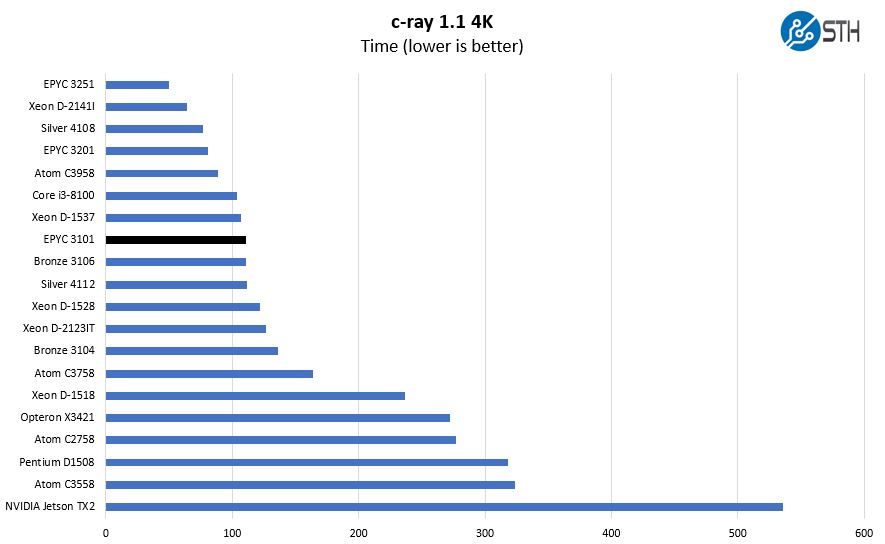
In c-ray, AMD “Zen” architecture performs very well. A slight victory here for the AMD EPYC 3101 over the Intel Xeon Bronze 3106 with twice as many cores shows the impact of having higher clock speeds and the Zen architecture.
7-zip Compression Performance
7-zip is a widely used compression/ decompression program that works cross-platform. We started using the program during our early days with Windows testing. It is now part of Linux-Bench.
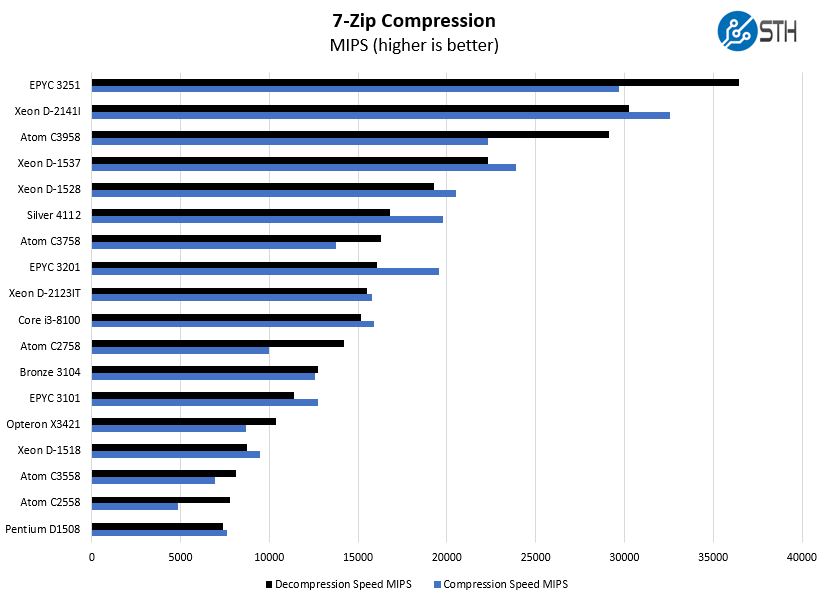
Here the AMD EPYC 3101 passes the AMD Opteron X3421 by a solid margin. These are similar TDP parts which make this an interesting AMD-to-AMD embedded comparison.
Sysbench CPU test
Sysbench is another one of those widely used Linux benchmarks. We specifically are using the CPU test, not the OLTP test that we use for some storage testing.
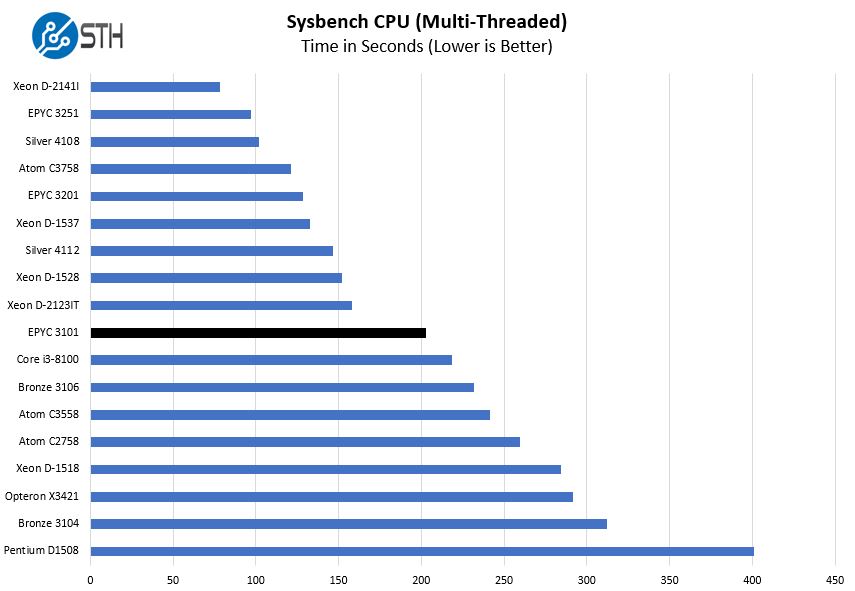
We wanted to point out that the AMD EPYC 3201 has a 30W TDP while the Supermicro M11SDV-4CT-LN4F utilizes the AMD EPYC 3101 at 35W TDP. We tested the M11SDV-4CT-LN4F head-to-head with the M11SDV-8CT-LN4F with the AMD EPYC 3201 and this seems like a reasonable spec. Our review of that platform will be forthcoming.
OpenSSL Performance
OpenSSL is widely used to secure communications between servers. This is an important protocol in many server stacks. We first look at our sign tests:
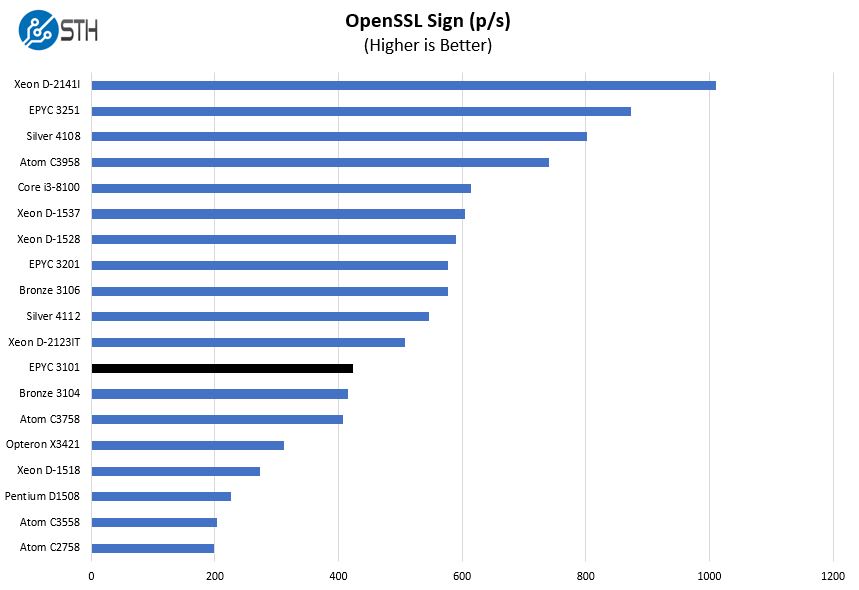
Here are the verify results:
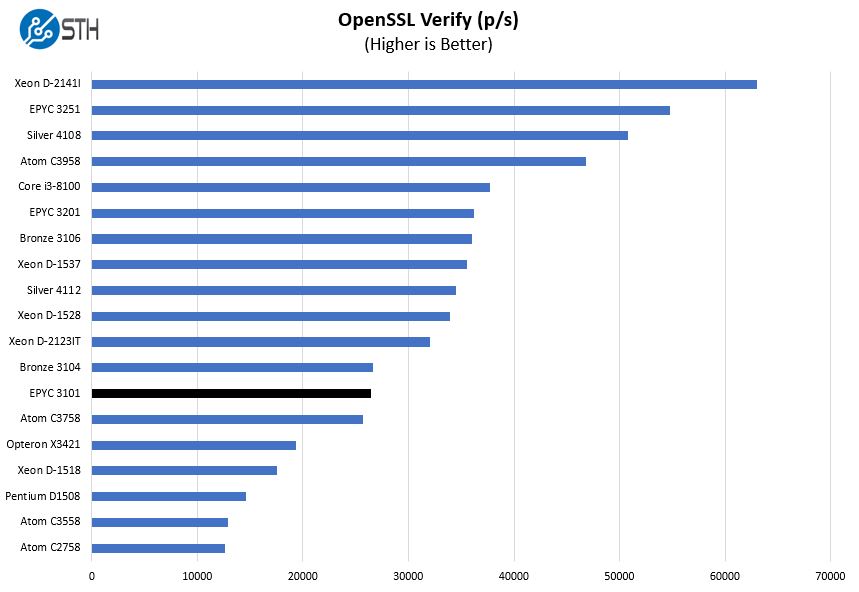
The AMD EPYC 3101 is not able to keep up with the higher cost and power SKUs like the Intel Xeon D-2123IT and Intel Xeon Bronze 3104 here. There are limits to having four cores.
UnixBench Dhrystone 2 and Whetstone Benchmarks
Some of the longest-running tests at STH are the venerable UnixBench 5.1.3 Dhrystone 2 and Whetstone results. They are certainly aging, however, we constantly get requests for them, and many angry notes when we leave them out. UnixBench is widely used so we are including it in this data set. Here are the Dhrystone 2 results:
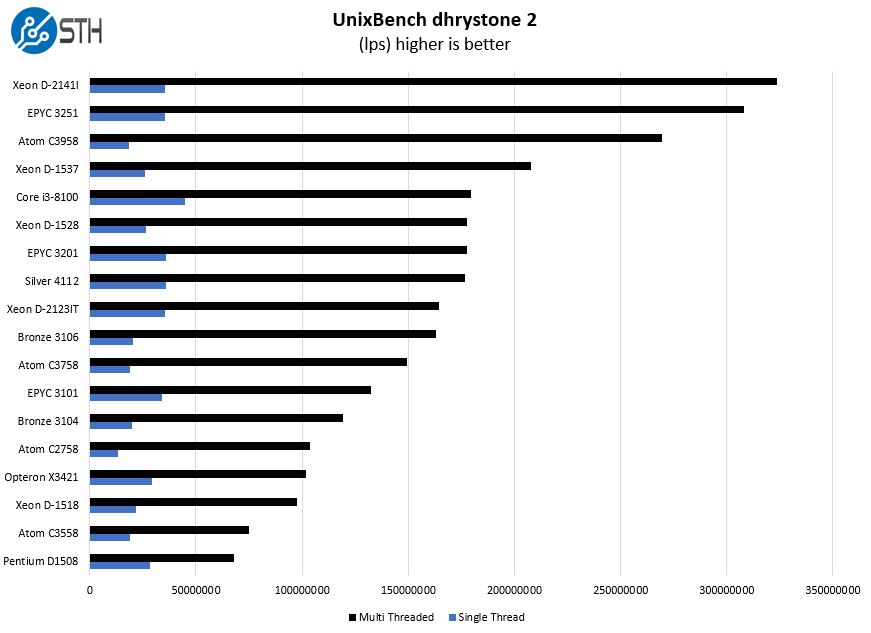
Here are the whetstone results:
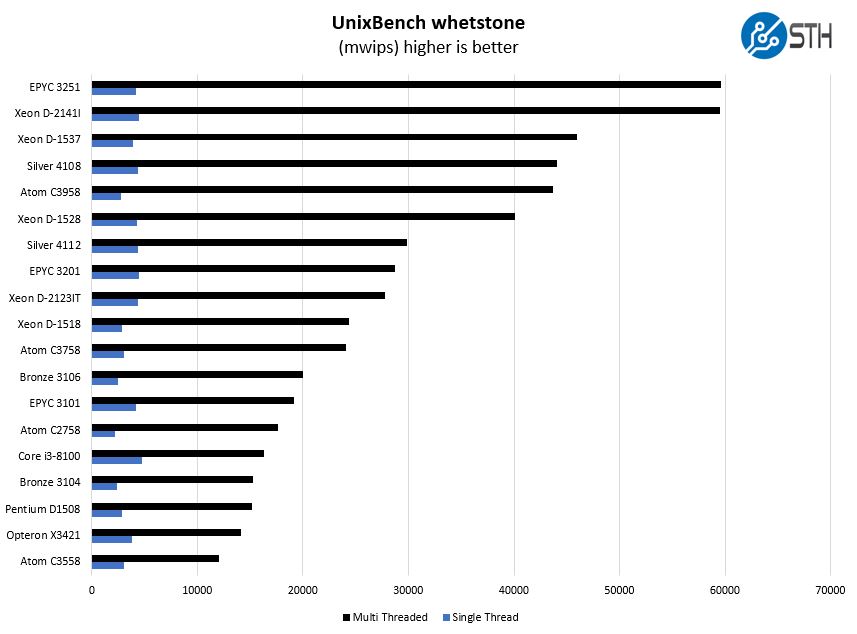
The per-core clock speed helps the quad-core AMD EPYC 3101 of the Supermicro M11SDV-4CT-LN4F keep pace with the Intel Xeon bronze 3106 again. The Intel Xeon D-1518 pulls ahead due to having 8 threads instead of four.
Chess Benchmarking
Chess is an interesting use case since it has almost unlimited complexity. Over the years, we have received a number of requests to bring back chess benchmarking. We have been profiling systems and are ready to start sharing results:
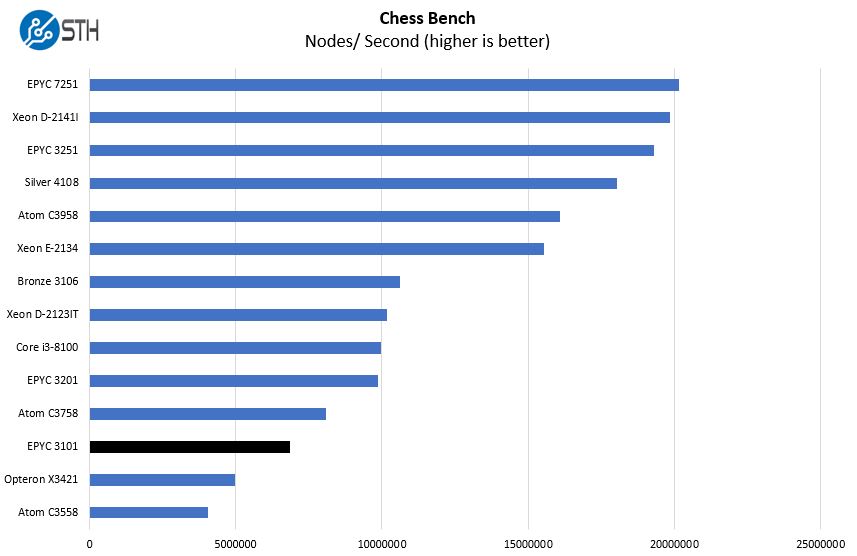
Here again, we see a performance that bookends the Intel Atom C3758 8-core CPU in conjunction with the AMD EPYC 3201. That is a strong showing from the AMD EPYC 3101 and Supermicro M11SDV-4CT-LN4F.
Next, we are going to look at the Supermicro M11SDV-4CT-LN4F power consumption followed by our final words.




Thanks for reviewing this motherboard. I actually have two of these motherboards running pfSense. They run great for my application.
If only it had two 10Gbit NIC:s, it would be a perfect pfSence board. My ISP offers a 1Gbit line, with an option to upgrade it to ~4Gbit line so I am looking something for that atm, but I guess my choices are either with Intel board or AMD with extra LAN card, which is bit sad. IMO Supermicro should have designed these board for a specific use case, and to be honest I cannot see which is a correct use case for this product. It has neither enough SATA / m.2 or expansion slots to be NAS board nor does it have fast enough NIC for Pfsense purposes. Kinda sad to see the missed opportunity for AMD fans. It is all around board which doesn’t do anything extraordinarily well which I feel would have been within reach if they did not try to satisfy everyone with a single product that has limited space.
Can you recommend a power supply unit that is of small form factor and has enough juice to power this board alone without any other peripherals?